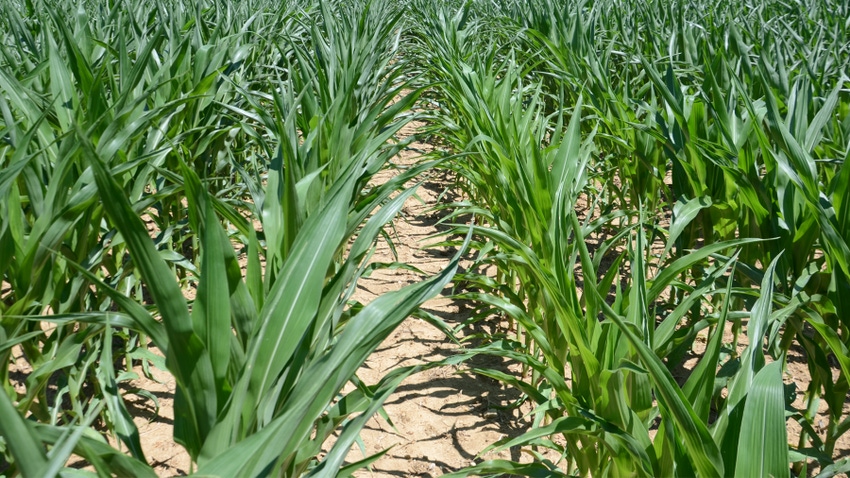
Corn leaves roll somewhere every year. Sometimes it rains and the rest of the season turns out OK. How much should you worry when corn begins rolling?
Dan Quinn notes that just because leaves roll doesn’t mean the corn apocalypse is underway. Very rarely, that nightmare comes true. For the Midwest, that would be 2012. An unusually lethal combination of early dry weather and high heat literally wiped out some cornfields and greatly reduced yields in many others. However, just because corn starts rolling doesn’t mean a repeat of 2012 is coming.
“Overall, young corn in vegetative growth stages is fairly tolerant to high temperatures and drought conditions,” says Quinn, Purdue Extension corn specialist. “Dry soil conditions early in the season can encourage deeper rooting, which will likely assist plants with moisture access later in the season if dry conditions persist. Deeper root systems allow plants to access greater volumes of soil for increased moisture access.”
Temperatures in the mid-90s during the afternoon typically do not impact corn photosynthetic capacity and yield if soil moisture is adequate, Quinn explains. It’s when moisture is limited that plants begin stressing. Rolling is actually a defensive mechanism to ward off more moisture loss during the heat of the day.
Bob Nielsen, retired Purdue Extension corn specialist, reasoned that leaf rolling occurs as plants close stomates to limit transpiration of moisture. Although the attempt to limit transpiration of moisture can help a stressed plant, closed stomates can reduce plant photosynthesis due to reduced carbon dioxide accumulation.
“The earlier leaf rolling occurs in the day and the longer leaf rolling is observed, the more stress the plant is under, and the more potential yield loss can occur,” Quinn says. For example, if leaves roll at 9 a.m., it’s far more serious than if you notice rolling in the afternoon, but plants looked OK that morning.
What stress can do to corn
The more consecutive days that leaves roll, the higher the potential for yield loss at the end of the season, Quinn says. Yield loss estimates have been quantified when drought stress and leaf rolling occur for four consecutive days or more.
Significant drought stress during vegetative growth can impact plant development and ear size potential, he continues. Potential kernel number per row is more sensitive to environmental stress than kernel row number per ear, he adds. Remember that while row number per ear can be affected by growing conditions, it’s primarily affected by genetics.
“Since dry soil conditions limit water uptake of a corn plant, these conditions can also limit nutrient uptake,” Quinn says. “For example, potassium deficiency is often observed under drought stress conditions.” He notes that early potassium deficiency symptoms include browning on the outer leaf margins.
Based on research by corn specialists over the past 50 years, four consecutive days of leaf rolling when corn is in early growth stages through V12 may reduce yield potential by 1% to 3% per day of stress. However, at V12 through VT, potential reduction climbs to 2% to 9% per day, and if the stress occurs from the pollination to blister stages, it can whack yields by 3% to 9% per day.
About the Author(s)
You May Also Like




